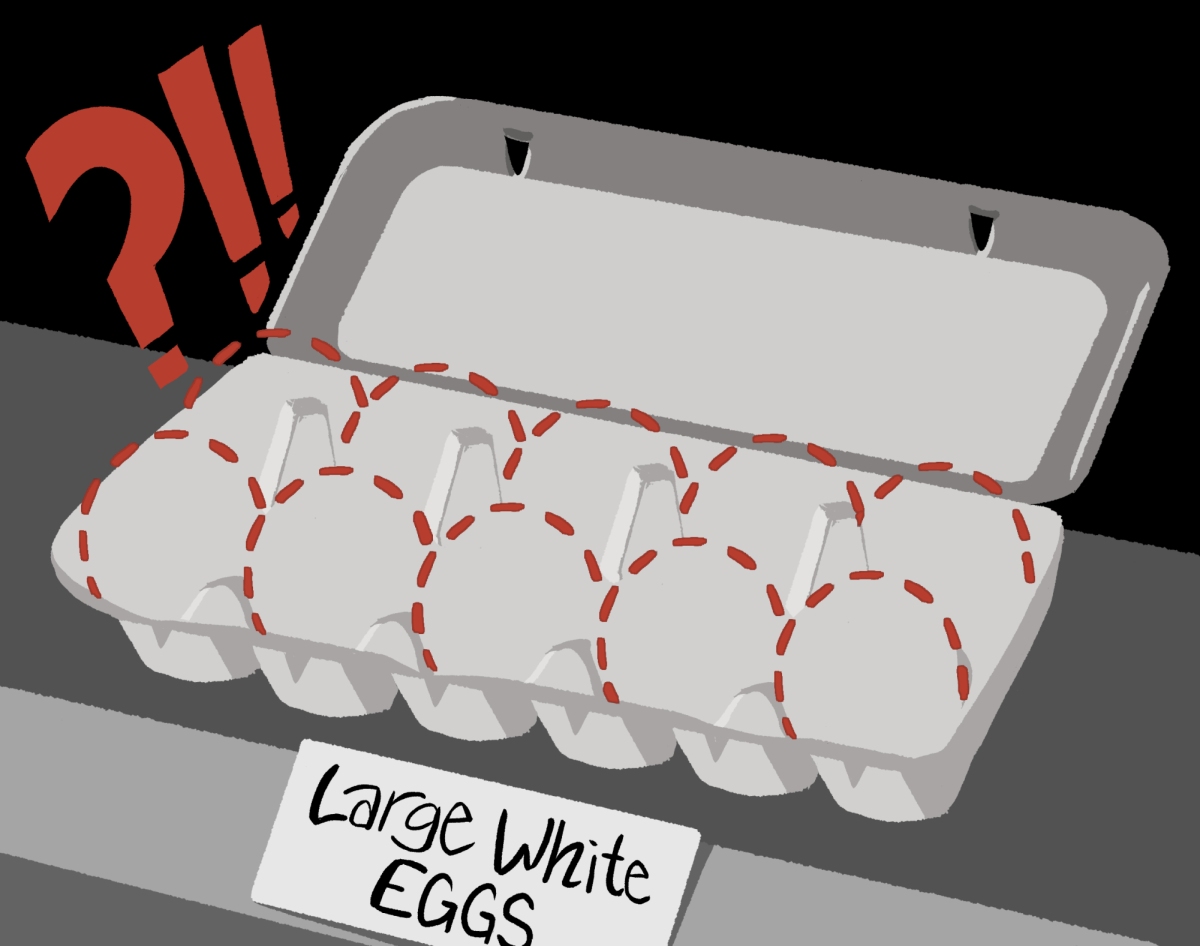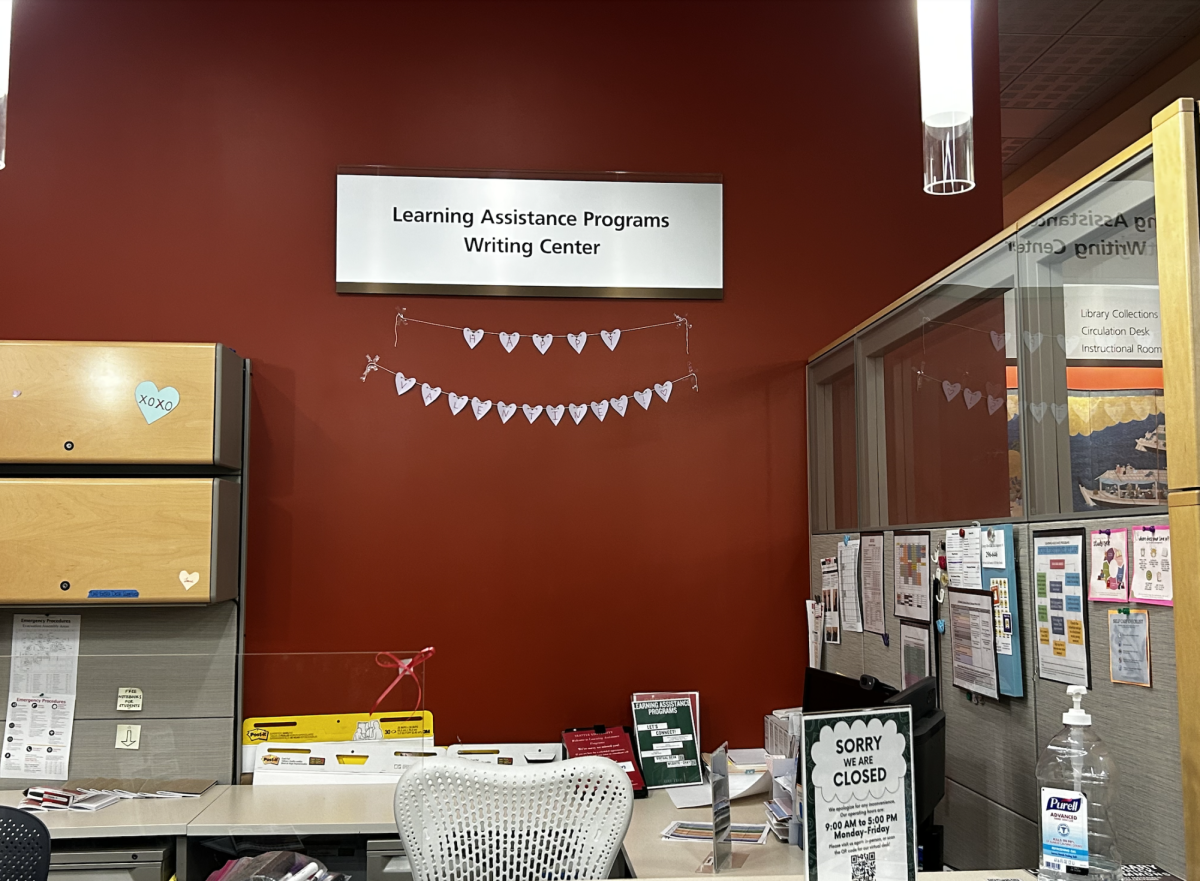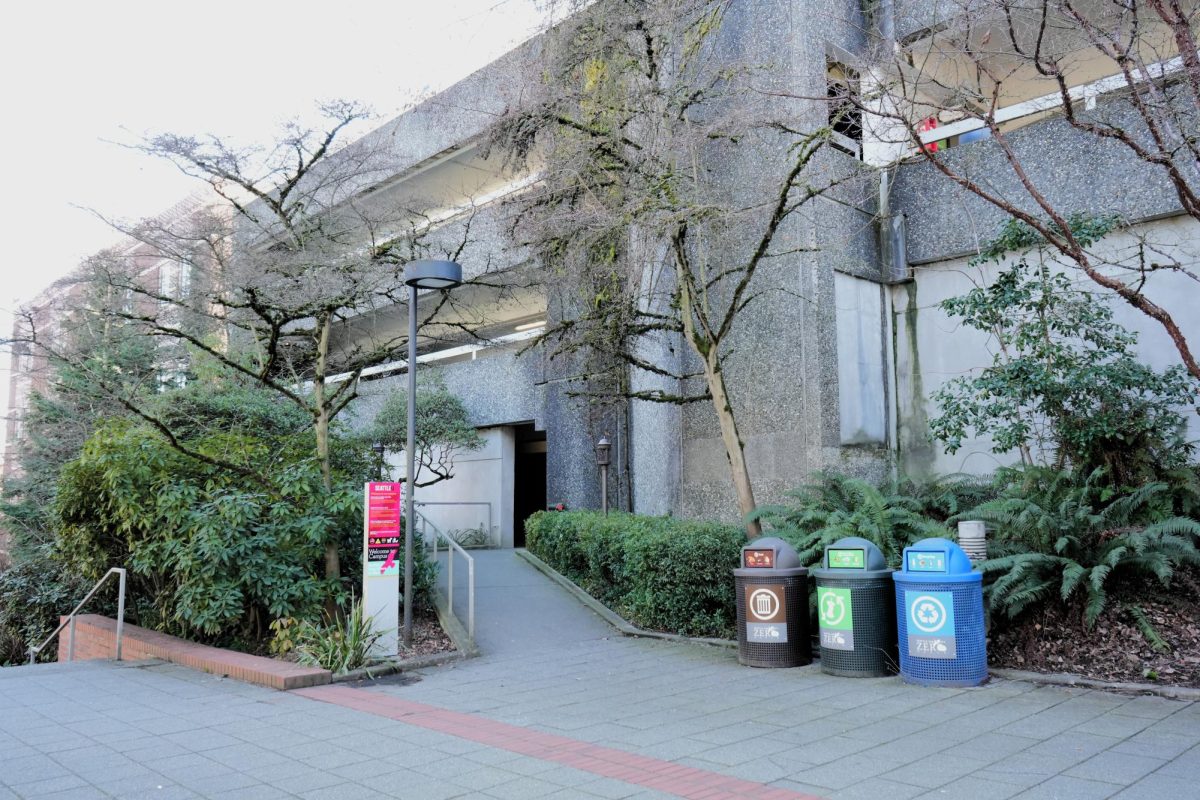“Human trafficking is the fastest growing crime. Over 27 million people are trapped in slavery. Human trafficking generates an estimated USD $150.2 billion per year. One percent of victims are ever rescued.”
These were the messages held over the heads of over 300 people wearing all black as they walked in silence through the streets of Seattle. On Saturday morning, Abolishing Injustice in the 21st Century (A21) walked down First Avenue for their “Walk for Freedom” to raise awareness surrounding global and local human trafficking and slavery. This year, A21 organized 450 walks across 50 countries on Oct. 20.
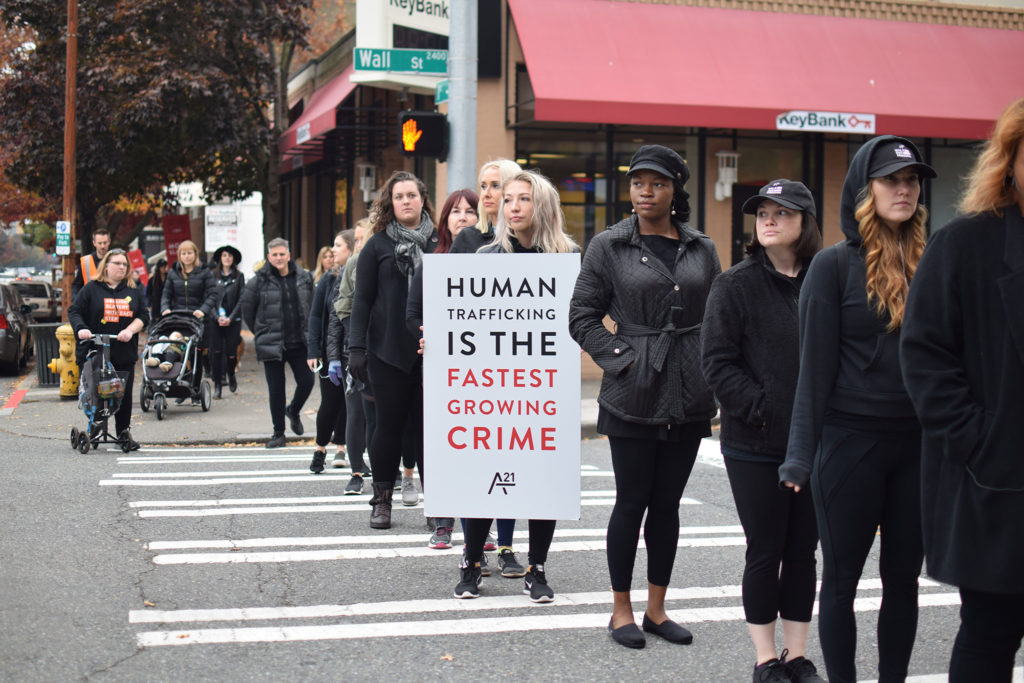
Over 300 walkers attended “The Walk for Freedom” and walked along First Avenue towards Pike Place Market.
A21 is a global organization that works to raise awareness about human trafficking, rescue victims of slavery and entrapment, and provide resources and support for them. More specifically, A21’s operational strategy in fighting slavery is designed to reach, rescue, and restore victims of exploitation such as sex workers, forced laborers, domestic servants, and child soldiers.
“A21 takes these people and they don’t only take them but they help restore them and re-establish their lives and give them the skills to do something else with their lives,” Marla Cowles, the event’s Director of Social Media Strategy, said. “When you’re taken at such a young age or in that industry for that long, you lose all self-awareness or self- skills of what you had prior to be taken. It’s hard to rebuild that if you’re not given the tools and love.”
For the past three years, tens of thousands of people throughout the globe have taken the “Walk for Freedom” together on the same day, at the same time in this manner to support the millions of slaves and victims trapped in human trafficking.
The purpose of the “Walk for Freedom” is to bring awareness to human exploitation and slavery in cities through the United States and world. Despite some belief that slavery is no longer an issue in America today, A21 works to take action and bring real support to those who experience the very tangible and traumatic reality of this crime.
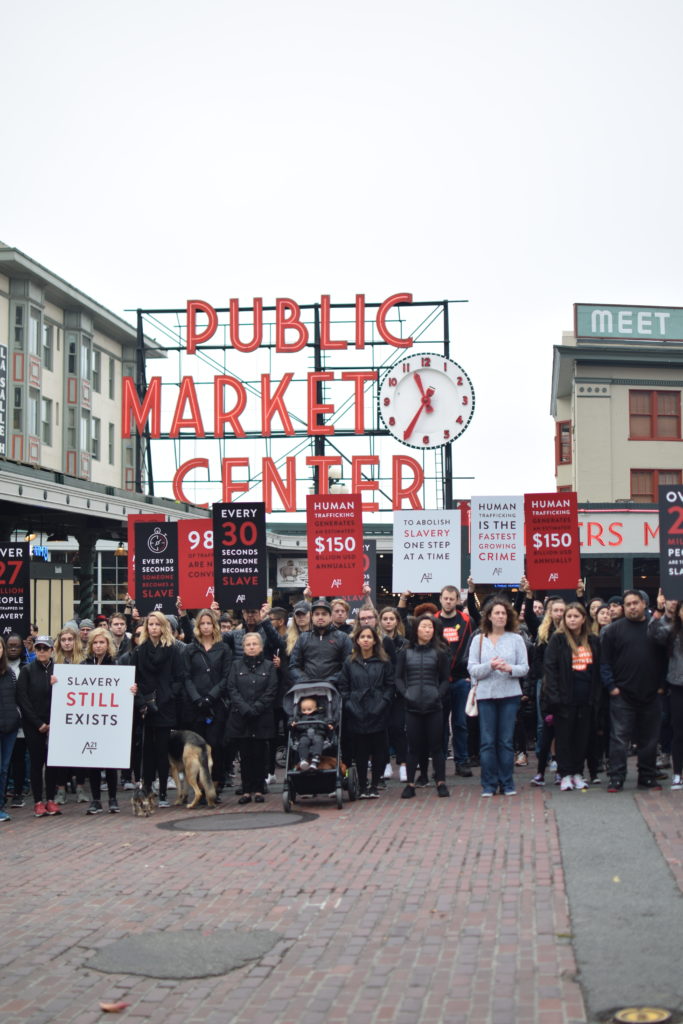
Participants of The Walk for Freedom amassed in front of Pike Place Market.
This event is specifically impactful in Seattle, which is one of the extensive trafficking hubs in the United States. Due to its status as a major port city, Seattle is perfectly positioned to enable trafficking imports and exports.
The event’s head of social media, Abby Jermasek, said that in America, people are unable to recognize the signs of human slavery in their own cities.
“So much of our society sees prostitutes on the side of the road and it’s so hard for us in our minds to articulate that they’re not there on their own terms,” she explained. “They’re physically not chained there, so we see it as they’re choosing to be there.”
Other participants, like Ashley Burns Nascimento, were inspired by current events and the current political climate.
“A lot of our human rights are at risk these days, and the opportunity to be a voice for people who are silenced and to bring awareness to folks who otherwise don’t have anyone fighting for them is really important,” Burns Nascimento said. “Anything that we can do to bring awareness to injustices is one step closer to correcting those wrongs.”
During the solemn journey in the streets of downtown Seattle, volunteers who had worked in A21 programs abroad remembered their experiences with victims of international human trafficking. Karen Park, a volunteer who had worked with the organization in Bulgaria and Thailand, recalled seeing children and even elderly women exploited through forced labor.
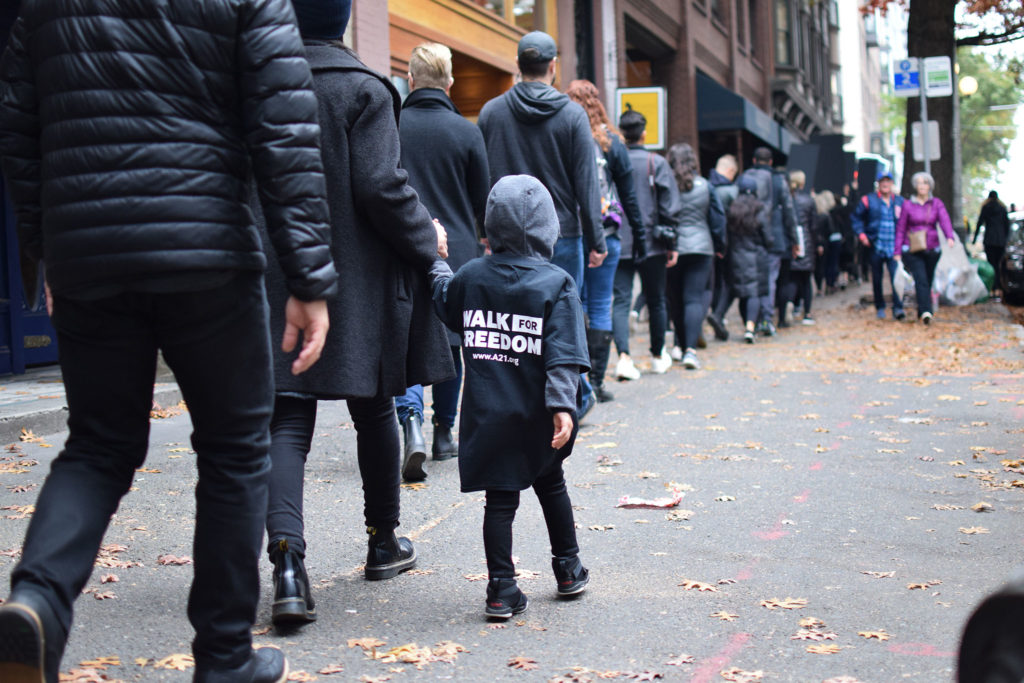
Participants dressed in all black and silently walked in “The Walk for Freedom,” protesting human trafficking and slavery.
In returning home to the states, Park was determined to spread awareness and educate those in the United States.
“How can we not stand up in a country where we do have a voice, where we do have presence to be able to say there are 27 million and counting?” she said. “If we can’t go after that one percent [the less than one percent that gets rescued], then let’s spread awareness here for the next generation so that we can prevent them from entering the system.”
The event culminated on arrival at Pike Place Market, where every single walker amassed in front of the infamous red neon letters. Local Seattleites, tourists, business people, and shoppers were exposed to the facts on human trafficking right in their own backyard.
“The older I get, the reality of having children and raising them in a community and world that allows this to happen doesn’t settle right,” Cowles said. “It’s really heartbreaking to see in a place where I’m now old enough to have kids to know that that could impact my children and it’s impacting our community in Seattle whether we know it or not.”
Elise may be reached at
ewang@su-spectator.com




